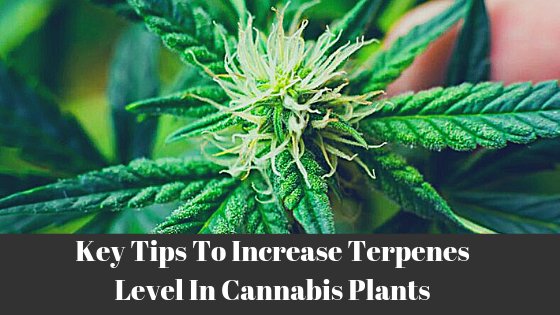The aromatic compounds responsible for the distinctive smell in Cannabis are Terpenes. Nowadays, they are a piece of interest for many, including budtenders, users, or harvesters. The cannabis plant is responsible for the production of Cannabinoids and varying amounts of oils. Likewise, Terpenes are also situated in the trichomes (glands bearing leaves and flower) of Cannabis.
They work in conjunction with CBD and other related compounds, e.g., THC, to make incremental or decremental changes in various strains. However, for some consumers, smells or different terpenes are the only markers for product purchase.
How are all Cannabis strains different?
The primary and critical difference in all the strain lies in their genetic variability. As aforementioned, trichomes situate Terpenes, THC, and CBD. They release them in a resin mixture that differs in every strain. The variability in these strains also determines the effects and therapeutic help they will eventually cause.
This difference in the strains has now moved from casual growth patterns to more commercial ones. It is understood that the key to producing a difference in scents and effects originates from the seeds, genetic constitution, and eventually, the strains.
Steps to increase Terpene levels
Below is a step-to-step guide to increase the Terpene yield in your Cannabis plants:
Selection of an ideal growth medium
With the advancement of technology, you don’t have to wait around for soil to grow anything nowadays. Many growth mediums do the job efficiently for you. However, not in this case. You might not want to get your hands on Hydro, Perlite or Coco Coir and see your crops suffer.
With Terpenes that come out of Cannabis, you need the old school ways; Yes! The soil and fertilizers. The Terpenes are grown out of the soil to serve the purpose of good flavor and aroma production. The growers that are targeting these properties should consider soil and appropriate fertilizing as their growth medium.
Keep the humidity low
Keeping the humidity low will favor the growth of your plant and eventually yield the right amount of Terpenes. During the process of flowering, the humidity levels at the range of 50 to 60% are found optimal.
As the final days of flowering approach, there are various factors to simultaneously ponder over, so the humidity is set at 30% ideally. It is helpful to stress the plants to increase the terpene profiles and production. Another prime objective is the decrement of mold and mildew build-up.
Low-stress training (LST) is preferred
Growers have confused the amount of stress required for a perfect yield for years. For Terpene quality, it is necessary to train crops under low stress. Low-Stress Training (LST) is the least harmful and the most natural way to increase the Terpene production in your Cannabis plants.
The process involves three simple steps. The first step is to top the plant at the time when it has 4 to 6 nodes. It helps in breaking the apical dominance and in turn, increases the branching and rising. The second step involves tying the taller stems by bending them over.
It is so that all the branches receive the same amount of sunlight at a similar level. The Last step is the initiation of the flowering stage. It is done by following some primary considerations to facilitate vegetation.
Light exposure and temperature
It is necessary to take care of the full spectrum LED grow light that is reaching the plant. Light exposure can be via Sun or LEDs (discussed below). The best way to ensure that every Cola of the plant is receiving an optimal amount of light is correct spacing.
If you maintain the temperature, you already do half of the job. The first and most crucial step is to make sure it doesn’t get too high. The ideal temperature for growth is in the range of 25 to 30°C at daytime and 17 to 18°C at night.
Here’s what to know; temperatures too low can act counterproductively on your plants. They will decrease the yield of terpenes and cause disturbances in other compounds as well. You need to make sure that the temperature doesn’t fall below 10° from the original when the plant is near-to or currently-is flowering.
Flush the plants
Stop feeding your plant by all means when you are two weeks away from harvesting. The cons of not doing so, will decrease the original content of flavor and aroma and replace them with overpowering nutrients.
What you need to do instead is to water the plant more profusely. Water will work to flush away all the excess of nutrients that have built-up in the plants and are unnecessary for the resulting yield. In the end, you will have a crop that is clean, amazingly aromatic, and free of excess compounds.
Mature – Dry – Cure
Although very obvious, to let your plant mature before harvesting is necessary. There are few exceptions like a threat from insects and pests that will require early harvest. Nonetheless, if you don’t let your crops mature, the THC and Terpene quality, as well as the quantity, will suffer.
The process of drying and curing will determine the number of terpenes you’re about to extract. Any rush in this process will ultimately decrease the Terpene yield. It will affect the aroma as well as the flavor.
During the process of drying, make sure you go slow. In the meantime, keep a keen check on humidity and temperature. Any fluctuations in these can straight-away affects the trichomes and simultaneously, the terpenes.
Curing is another step that requires proper regulation and control. Make sure you’re using jars for this purpose. At the same time, there should be a prompt regulation of fresh air. It will retain Terpenes adequately. Not only this, but it also has beneficial effects when CBDs and Terpenes are vaped.
Growing Terpenes with LED lights
LED spectrums are known to increase the yield of terpenes from Cannabis. Not many researches have been conducted to prove this particular theory. However, a study demonstrated connections between LED and CO2. Two light spectrums were validated to grow the copious amount of terpenes (Red-Blue 8:2 and Red-Blue 6:4).
The conclusion of this particular research showed a more significant tilt towards the one with 80% red and 20% blue light spectra. In the same way, other researchers claimed that the switch from 8:2 to 6:4 at the later stages of vegetation might result in an increase in terpenes by the boost of blue light.
Another positive aspect of LED grows lights is reasonable temperature control. With sunlight, you might have to surrender to heat energy at some point. However, with LEDs, maintenance of cooler temperature is easier. High temperatures have detrimental effects on Cannabis compounds.
Final words
If you will to increase your harvest and ultimately the Terpenes with exceptional aroma, flavor, and effects, you need to know your Terpenes. Steps required for a fantastic yield seem simple to see, but in reality, they are tedious and a hard job.
To make sure you are doing the process right, you need to learn by extensive researching and later on, by experience. There are many ways to increase the Terpene production. There are ways to guarantee variability among strains via simple harvesting as well. Pick your steps wisely and function according to your needs and resources.
[ratings]
















